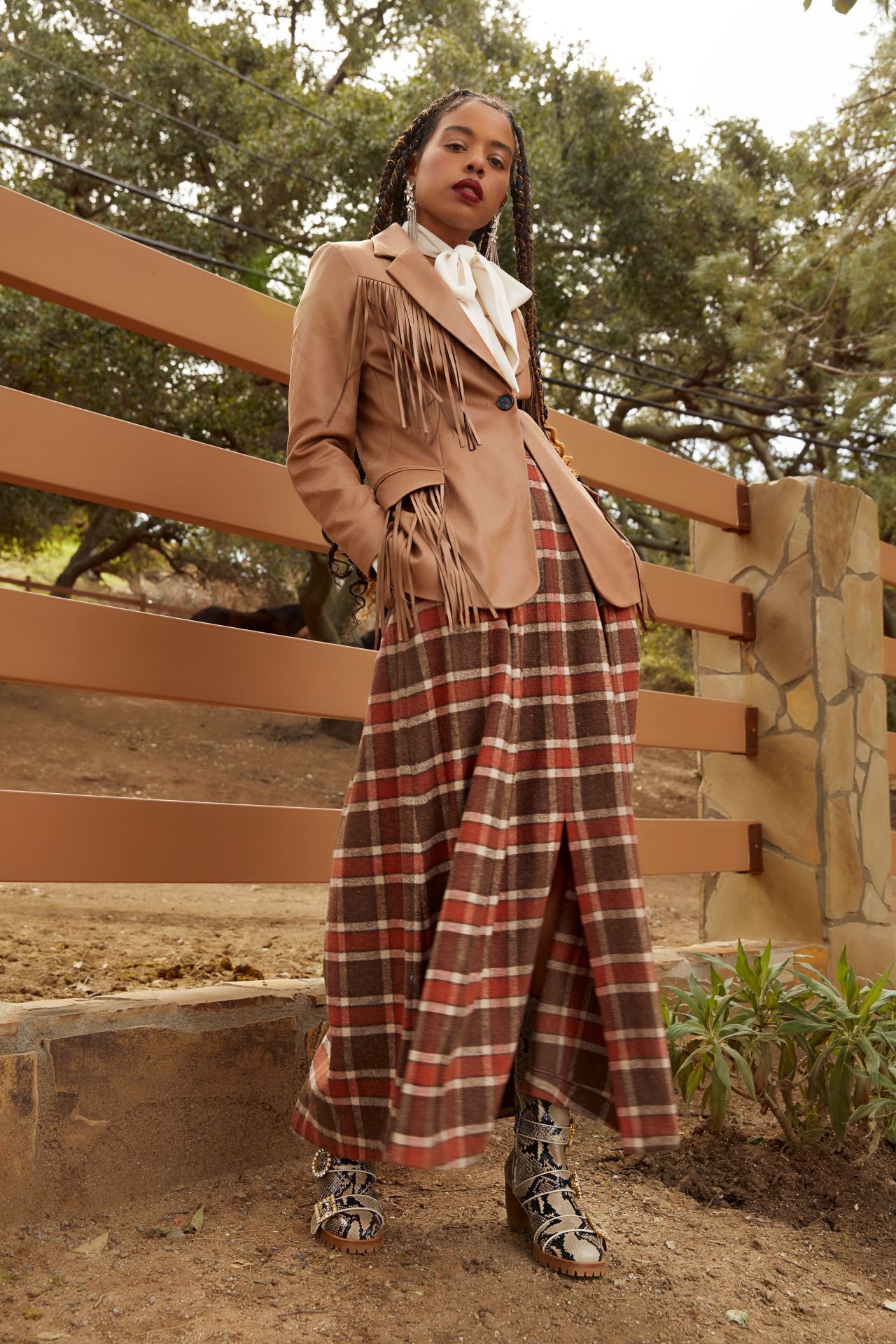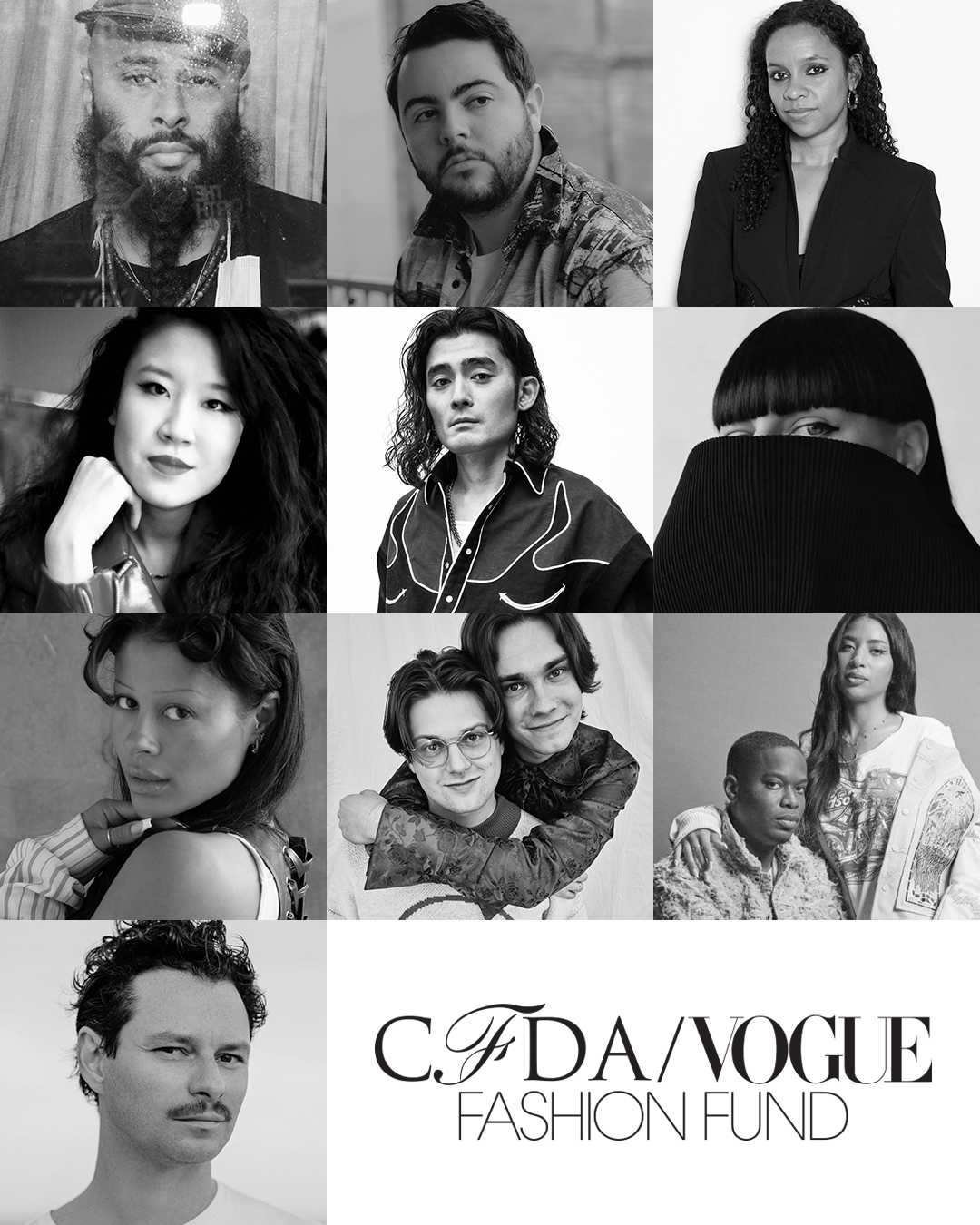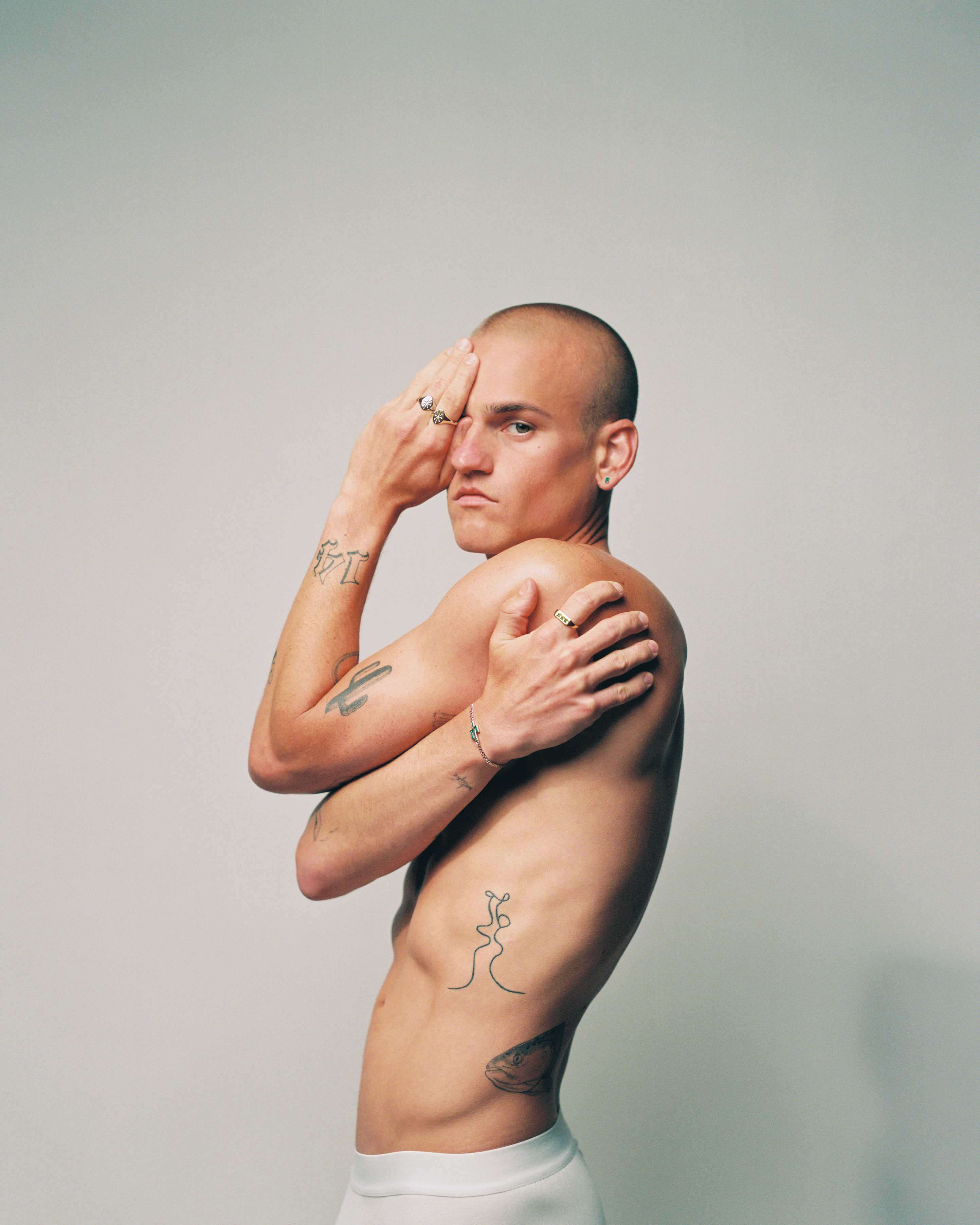Career Conversations: Autumn Adeigbo
May 19, 2023
Rashad Benton


Nigerian-American fashion designer Autumn Adeigbo launched her eponymous label in 2016 after years of entering business competitions, and working retail and in hospitality at some of the most sought-after restaurants in New York City.
Before the internships (most notably with Betsey Johnson and Andrea Lieberman of ALC), the brand investments from Mila Kunis, Cameron Diaz, and Gabrielle Union, and before you could buy her collections at Bergdorf Goodman, Nordstrom or Neiman Marcus, Adeigbo was a child in Poughkeepsie, NY.
At the age of 10 her family relocated to the Midwest so that her mother could attend medical school in Champagne, Illinois, and pursue becoming a doctor. When Adeigbo graduated high school, she found herself studying economics at Spelman College, one of the HBCUs that make up the Atlanta College Center otherwise known as the AUC. Post Spelman, she moved to New York City where she earned a second degree in fashion design from Parsons, then embarked on approximately 17 years of hustle.
This long journey would eventually pay off as Autumn became the first Black woman ever to raise $1 million in venture capital funding for a fashion brand.
Today, the numbers queen produces clothing for a particular customer base who isn’t apprehensive about color or prints—as if she is unintentionally and unofficially readying looks for Tim Burton’s next film. When we spoke, Adeigbo, who now lives in Los Angeles, was in New York working on the opening of a new design and production space. Among the advice she gives in this story to other entrepreneurs, she admitted that she had to figure out all on her own how to hire people and launch her brand in department stores after raising all that funding.
I read that your Nigerian American heritage is the foundation of your brand, but where do you look for creative inspiration?
Fall 2023 was heavily inspired by a ranch I visited in Malibu – which is where the equestrian lifestyle, fringe, leather chaps and direct horse embroidery stems from. Initially, it was my Nigerian heritage, then it shifted to more of a global aesthetic. Since day one our company tagline and mission has focused on: culture, color, conscious[ness]. Unfortunately, the demands of running the business side of my brand as well as creative means I only get to spend about 5 percent of my professional time on the creative side of the business.
How did you decide on your brand’s look or identity?
My mother loved prints and always dressed me in patterned fabrics when she made custom one-of-a-kind clothing for me as a child, so it’s the thing that I foundationally remember most from my childhood. So, I’ve always aligned with prints and printed clothing. However, I’m starting to experiment with the world of solids because I understand that we have to serve the market, so I’m shifting a bit.
Bergdorf Goodman, Neiman Marcus, and Nordstrom carry your brand; how do you balance uniqueness and commercial appeal?
I’m still working on it; it’s difficult. I routinely tell people how hard it is to have a consumer brand that’s fashionable instead of a different kind of consumer product company like yogurt or wine. In food, a formula must be perfected and uniformly applied. However, in the fashion industry, purely on the product development side, we must consistently release hundreds of new products four times or more per year, while food companies have a few products they release year after year. The customer might have liked what you did last season but not like what you did this season, or you might have introduced your best seller in a new fabric, but the customer doesn’t have the same positive response. I’m still learning our customer, a lifelong journey I’m sure, as she constantly evolves, and we evolve with her.
Let’s talk about the business aspect, Autumn. You received a degree in economics from Spelman College. In what ways did this help your company grow?
In the same way, I am incredibly grateful I attended an HBCU; I am so thankful for my economics degree because I am not imitated by numbers. I enjoy constructing complex projections, distinguishing between gross and net margin, and formulating cash-flow scenarios. I established the foundation of this financial comfort while pursuing my degree at Spelman.
Are you your business’s creative and business leader at the same time? If that’s the case, how do you manage your time between them?
About 95 percent of my time is spent on the business side. I try to devote two full days per week to design. I do my best to maintain that commitment, but it’s often interrupted by non-creative fires that need to be put out. We hired our first full-time designer last August to begin giving the design function the attention it deserves. I’m open to finding the right business partner who would allow me to get back to designing more, but I see building a business as a creative endeavor as well – and truly enjoy it.
It is said that your company became the first brand led by a Black female designer to raise more than $1 million in venture capital funding. How?
I worked my ass off for a long time; that’s how ha-ha. There’s no one formula, but any time there was a networking event around investment, I went to it. For example, I entered the New York Public Library business plan competition. Any competition I could win money I entered and lost almost all of them – like 100 contests, I’m sure. If it was related to launching a design business or entrepreneurship, I applied for them but was never selected, but the beautiful thing about that is when it was my turn, I won in a massive way with my fundraising success.
I ask that because people get lost. Without revealing any of your methods or secrets. How does a new designer know where to begin when it comes to funding?
Friends and family are where they say to start first, but if we’re being honest, that step is for people from economically advantaged backgrounds because if you come from the average economic situation, precisely what friend or family member are you going to ask for $100,000? Besides that, there are business plan competitions like; The New York Public Library in both Manhattan and Brooklyn, I believe, have annual competitions. Back then the first prize was $15,000, the second prize was $10,000, and the third prize, where I placed, was $5000.
People can investigate WEALF, which provides loans to female entrepreneurs; they’re associated with a bigger bank called Accompany Capital. If you pay off your first smaller loan, you can apply for a bigger one, and continue that pattern to fund your purchase orders as your company grows. Angel investment groups like The Broadway Angels consist of successful women entrepreneurs, operators and VCs in Silicon Valley who write angel investment checks as a collective. The Pipeline Angels mission is to act as friends and family round to women who don’t usually have access to capital or traditional funding like loans from banks. The most important thing is persistence and having a business model that works and can aggressively scale. Networking is essential.

Image courtesy Meg Urbani
When I first contacted you, I wanted to learn more about your connection to fashion and the fashion industry. So, let’s discuss it. Is there pressure?
I handled the windows for Paul Smith’s visual merchandising department and worked on the floor with women in retail. I have participated in meetings with buyers and salespeople, worked in celebrity and advertising styling for eight years and briefly at W Magazine in the fashion closet. The delightful thing about having been in this industry for such a long time and having a life span is that I’ve seen individuals come and go. In a way, it trained me to put blinders on because I’ve had my moments when I was jealous of other people for how successful someone was, and then they left the industry for whatever reason. But, despite how it looks outwardly, you don’t know how difficult it is for others, so I just put my blinders on and walk forward.
I want to go back to the funding you’ve raised. Do you have yearly development plans, and if so, what number are you trying to reach?
Fashion isn’t an industry that’s easy to fundraise for; so, I’m extremely proud to have accomplished such a daunting feat. Yes of course, I have numerical projections and goals but as a private company we have the luxury of keeping them under wraps. What I can share is that we have driven multi-millions of dollars in revenue with a team as small as four diverse women.
Do you have any other plans, or are you just looking to expand your portfolio of department stores? What follows?
I want to dive deeper into our community. We’ve never had an internal sales or marketing team, so our growth has been for the most part organic. Yes, we share our product placements on Instagram of our celebrity clientele, but I look forward to doing more. Telling my story, the company’s story, the team’s story, and our community’s story is something I am looking forward to doing for the first time.
You have a large clientele and following of female celebrities. Have any of the women shared what they find appealing about your clothing?
I hear most often from the women we dress, all the women’ not just celebrities, is “Joy.” They describe it as “special, walking art that allows them to stand out” from the crowd. We have a made-to-order DTC model, so we have to invest pretty extensively. I like to think our clothing fits pretty well and is quite beautiful even more so in person, I’m told. In fact, sometimes I try on our clothing for the 1st time myself and am amazed by how it “comes to life” on one’s body.
How you’ve been able to sustain in an industry that isn’t exactly known for taking care of its independent designers.
Years of networking and community building. I’m very happy with my community: it includes people working in technology, fashion, restaurants, hospitality, social impact, venture capital, working on the ground in Africa and my “family” of supply chain working in the garment district; it all means so much and I rely on those individuals to support the brand, and myself as an extension.
Before we wrap, tell me an important lesson you learned about working in the fashion industry.
You’ll never not be invited to a party you’re supposed to be at.
autumnadeigbo.com

